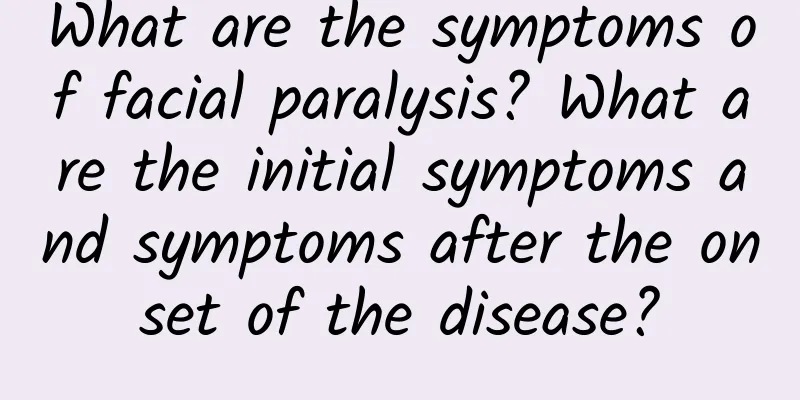The drug of choice for chronic aplastic anemia

|
People with anemia should pay attention to the rationality of their daily diet. Although supplementing iron from food is a good method, the iron content in food is so low that people with severe anemia are best treated with medication, especially those with chronic aplastic anemia. First of all, in addition to being effective, the drugs for chronic aplastic anemia should also have fewer side effects, especially they should not cause strong harm to the kidneys. It is best to consult a more authoritative doctor. Treatment Chronic aplastic anemia develops slowly, and anemia, bleeding, and infection are all mild. In addition to following the general principles of aplastic anemia treatment, the following treatment methods are also available in clinical treatment: (1) Drugs that stimulate hematopoiesis: mainly androgens (such as stanozolol, testosterone undecanoate, danazol, testosterone propionate, etc.). Androgens are a class of biologically active endogenous compounds that have both masculinizing and protein anabolic effects. Its mechanism of action in treating aplastic anemia may be to increase the production of erythropoietin, making erythroid cells more sensitive to erythropoietin, enhancing the effect of erythropoietin cell production on hematopoietic stem cells, and promoting erythroid-directed cell differentiation into proerythroid cells and subsequent proliferation and maturation into red blood cells. In addition to the effect on red blood cells, the effect on platelets is not very obvious, and a longer period of treatment is required to increase platelets. This type of drug is more effective for patients with milder and less progressive bone marrow hematopoietic tissue reduction, but is often ineffective for those with severe bone marrow hematopoietic tissue reduction. The treatment of aplastic anemia with androgens requires a long time, generally not less than 6 months, and the best application time is 1 to 2 years. However, the adverse reactions of the drug, such as virilization, liver damage, etc., should be considered. (2) Adrenal cortical hormones: Adrenal cortical hormones are effective in treating bleeding and fever in patients with aplastic anemia. Its mechanism is to act on the hematopoietic microenvironment, reduce capillary permeability, have a hemostatic effect on skin and mucosal bleeding caused by thrombocytopenia, eliminate inflammation and exudate, and inhibit immune response. However, adrenal cortical hormones have many side effects. Long-term use in patients with severe granulocytopenia can easily lead to serious infections and may also cause gastrointestinal bleeding. The combined use of adrenal cortex hormones and anabolic steroids can have a better effect. (3) Drugs that improve microcirculation: Microcirculation is a component of the hematopoietic microenvironment. By improving the patient's microcirculation, the remaining hematopoietic progenitor cells can be stimulated and nourished. Commonly used drugs are: ① Yiyeqiu alkali, which is a biological alkali extracted from plants, can stimulate the central nervous system, improve bone marrow microcirculation, and promote the proliferation of hematopoietic stem cells. ② Scopolamine drugs. Through the anticholeline effect of the nervous system, it relieves microvascular spasm, adjusts bone marrow blood perfusion, and promotes cell differentiation and maturation. (4) Splenectomy: Splenectomy has a history of nearly a hundred years in the treatment of chronic aplastic anemia. The spleen is generally considered to be the main organ for retaining and destroying red blood cells and platelets and producing suppressor T lymphocytes and various antibodies. About one-third of patients with aplastic anemia can be relieved after splenectomy. For other patients, drug treatment was ineffective before splenectomy, but the disease was effective after splenectomy. However, many patients treated with splenectomy cannot achieve normal blood test results and incur great risks. Therefore, the indications for splenectomy for the treatment of aplastic anemia should be strictly followed. Most cases have a slow onset, and the main symptoms are often fatigue, shortness of breath after exertion, palpitations, dizziness, and pale complexion. If there is bleeding, it is mild and internal bleeding is rare. Infection and fever are generally mild, appear later, and are easier to control after treatment. The liver and spleen lymph nodes are not enlarged, but in advanced cases the spleen may occasionally be slightly enlarged. The course of the disease is long, and patients can survive for many years with their condition gradually improving or even close to recovery. Some patients develop acute symptoms. |
<<: What to do if the stomach hurts due to medication
>>: Side effects of estrogen medications
Recommend
What to do if you have premature ovarian failure at the age of 29
For women aged 29, they are in a very awkward per...
What medicine should be used for baby nebulization
If a baby has diseases such as asthma or bronchit...
Clinical manifestations of hypokalemia
When we go to the supermarket to buy salt, we may...
What is the cause of a child coughing up white phlegm?
Children coughing up white sputum is a situation ...
What are the symptoms of perianal abscess? Be careful of these manifestations
Don't think that perianal abscess does little...
How to lose weight if your neck is fat
For those who love beauty, they do not allow any ...
Can a 4-month pregnant woman eat shepherd's purse?
As we all know, shepherd's purse is a very de...
What to do if the breast milk nipple is broken
Many families will hire a confinement nanny speci...
Chinese medicine for insomnia
I believe everyone is familiar with insomnia, and...
Ways to speed up uterine contractions
Uterine contractions can effectively reflect a wo...
Fear, unwilling to see people, chest tightness
When people are in a stable environment, they sho...
Can I sleep with my partner during the 40th day of pregnancy?
Pregnancy is a very important event in the life o...
Where is the best place for hyperthyroidism massage
If you have hyperthyroidism, do not massage your ...
How is genital herpes transmitted? It's because of this
There are many ways of transmission of genital he...
Is there a connection between genetics and deformity?
Heredity refers to certain physical characteristi...









